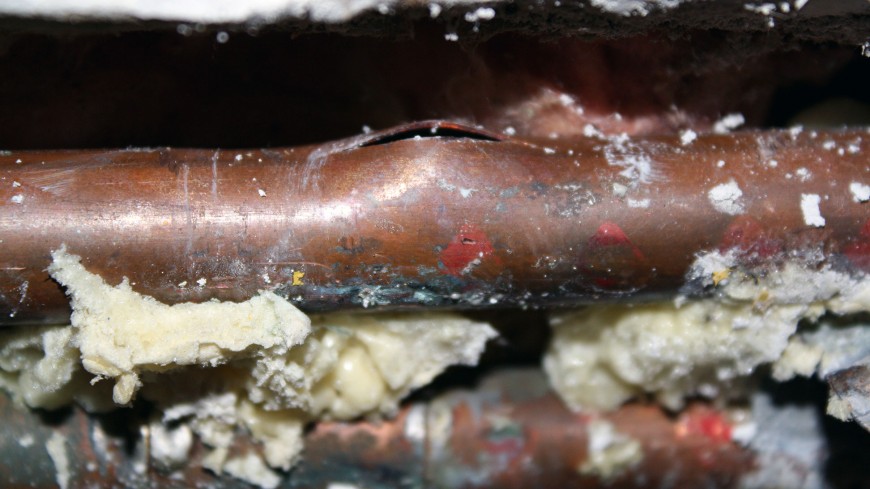The end of December and all of January have been absolutely crazy weather-wise here in Toronto. From a major ice storm over Christmas to a ton of snow before New Years, a second smaller ice storm and now onto freezing (think -40 C) temperatures, we’ve seen it all.
Unfortunately this crazy weather has given us one MAJOR problem. A burst water pipe behind the sink in the bathroom on the main floor.
The main floor bathroom is in the extension off the back of the house which has no ductwork in it (so… no heat). When the temperature started to drop outside we noticed it was cold back there but we thought it might be manageable given that there is a register in the kitchen floor right next to the opening. Unfortunately all of the plumbing is in an exterior wall and completely froze. When temps got back up to +3C one weekend the pipe behind the sink burst and we had a huge mess to clean up.
In order to find where the break was we had to open up the walls in the main floor bathroom. The tiles broke off easily and we were able to locate the burst pipe. We also could see that as suspected the walls are not properly insulated and if we fixed that section of the pipe there would continue to be the risk of another pipe bursting back there at some point this winter. We made the decision to completely cut the water off to the back bathroom until we can fix it properly in the spring/summer.
The first thing we did to stop the water flowing was to turn off the water supply to the house. After mopping up a few buckets of water we were ready to address the problem. There are two pipes that feed cold and hot water to the extension that are easily accessible through the basement ceiling since we removed all of the drywall and finishings down there during the basement demo. We took this opportunity to simplify the plumbing layout and re-routed the plumbing that feeds the kitchen by splitting off at an earlier point. We used a standard tubing cutter to cut the pipes off making sure to have a bucket ready to drain the pipe before preparing the pipe for capping and leaving enough room to reconnect it later. After sanding it down with some plumber sandpaper, we dry fit all the pieces together before applying flux to the pipe and fitting and soldering the caps. The moment of truth is turning the water back on and checking for leaks…. No leaks!
We are not experienced plumbers, but luckily we had some family with plumbing experience over that morning and were able to fix the problem in a few hours and for only a few dollars. As long as you have the right tools, minor plumbing jobs are totally doable for DIY-ers. This setback didn’t cost us a lot to fix in the short term, but does change the order of our planned renovations since we need this main-floor bathroom functioning in order to start work on the upstairs bathroom. This means we will be planning for a reconstruction of the extension ahead of the original schedule which brings up some costs earlier in the overall timeline.
Moral of the story… move to a warmer climate where pipes won’t burst?










Comments